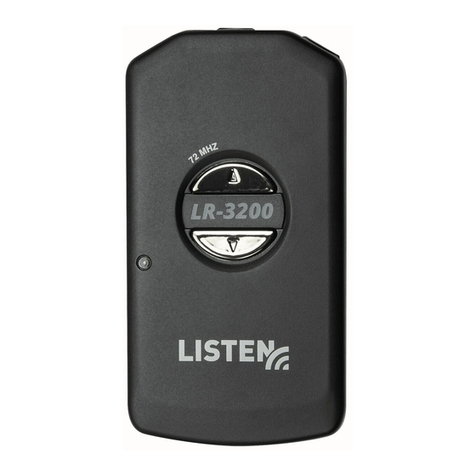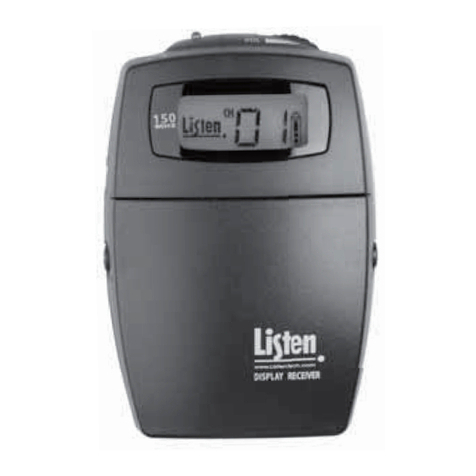Listen Technologies LA-350 Guide
Other Listen Technologies Receiver manuals
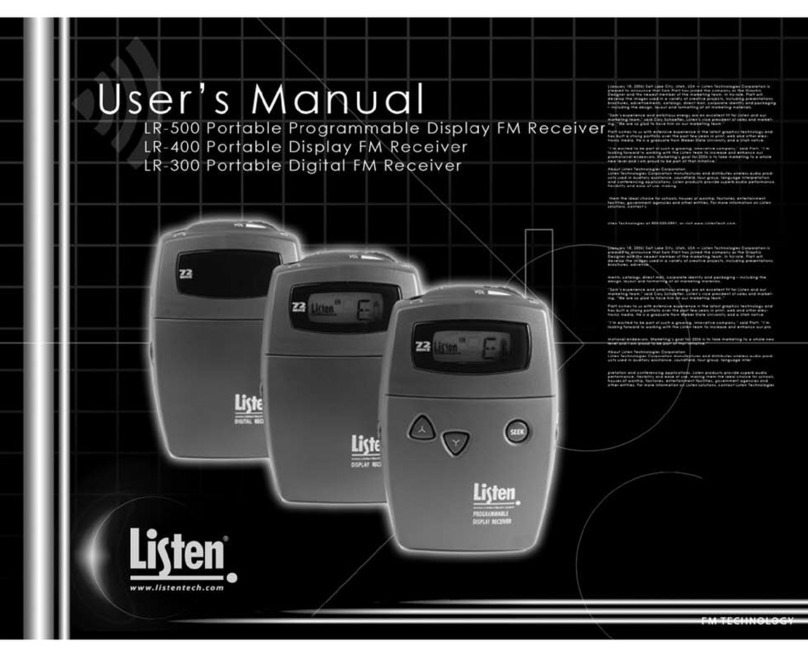
Listen Technologies
Listen Technologies LR-300 User manual
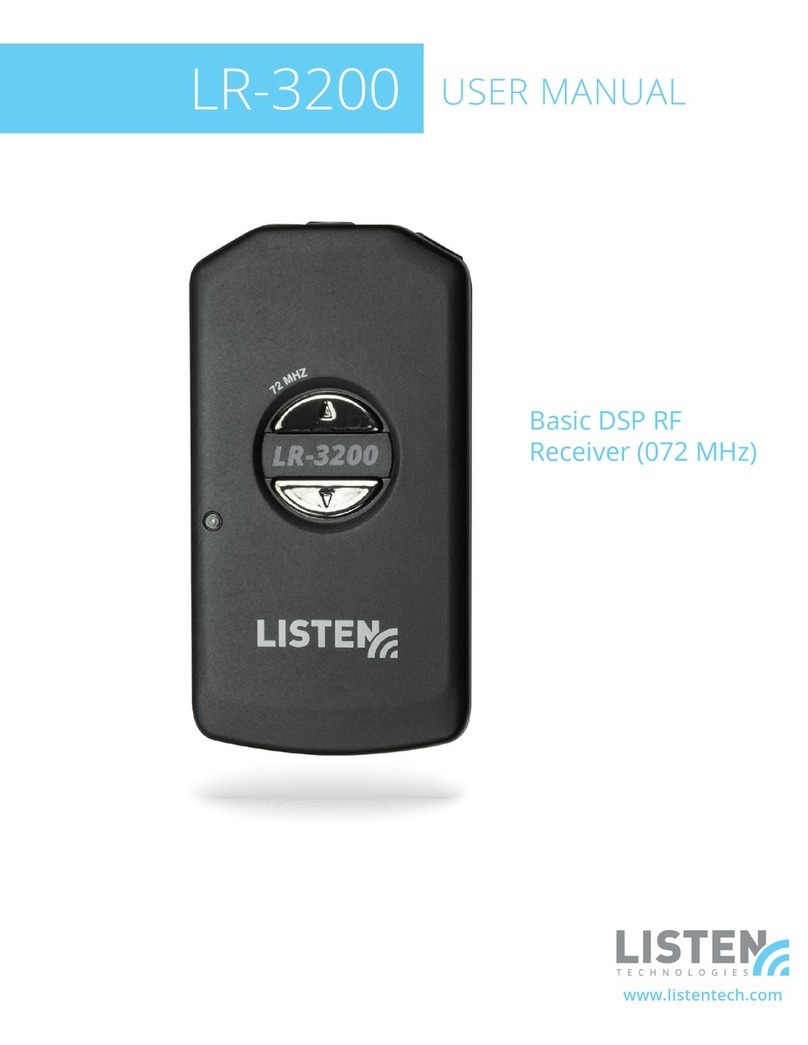
Listen Technologies
Listen Technologies LR-3200-072 User manual

Listen Technologies
Listen Technologies LR-300 User manual

Listen Technologies
Listen Technologies LR-500 User manual
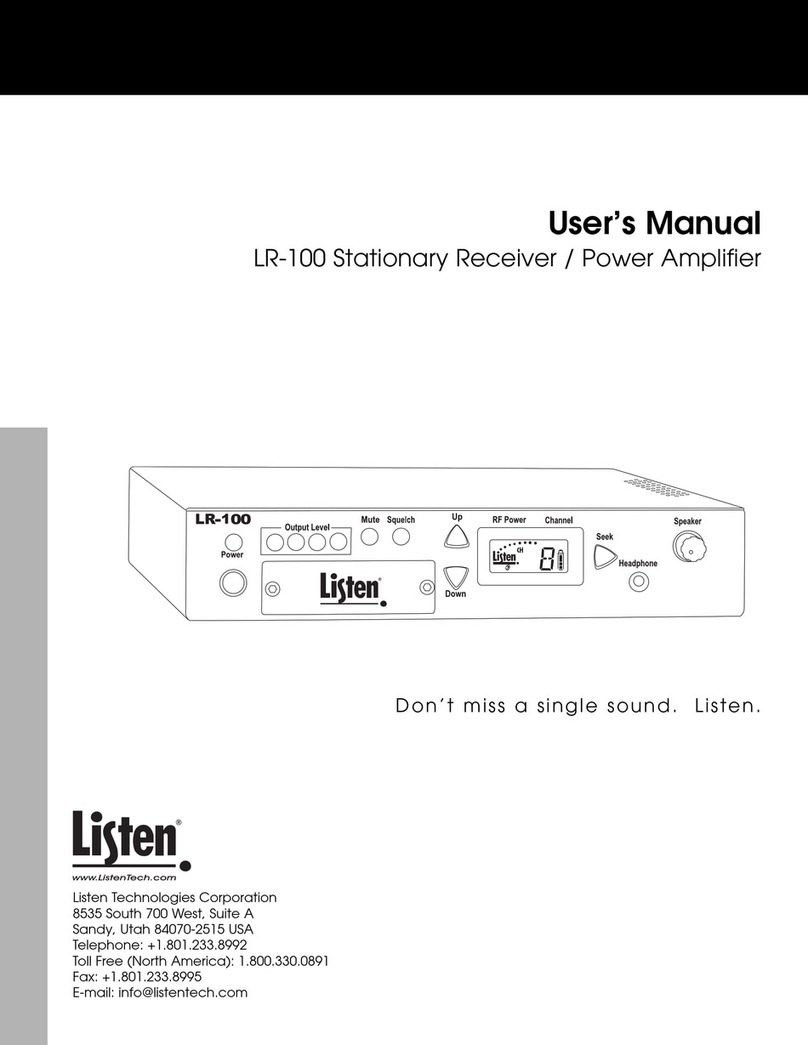
Listen Technologies
Listen Technologies LR-100 User manual
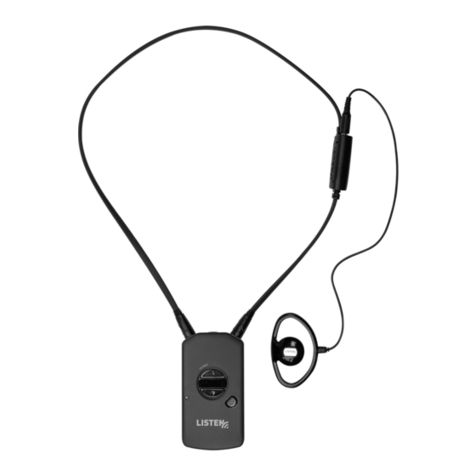
Listen Technologies
Listen Technologies LR-5200-072 User manual
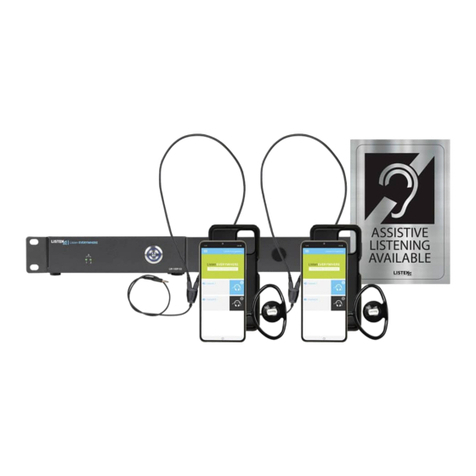
Listen Technologies
Listen Technologies LWR-1020 User manual

Listen Technologies
Listen Technologies LR-100 User manual
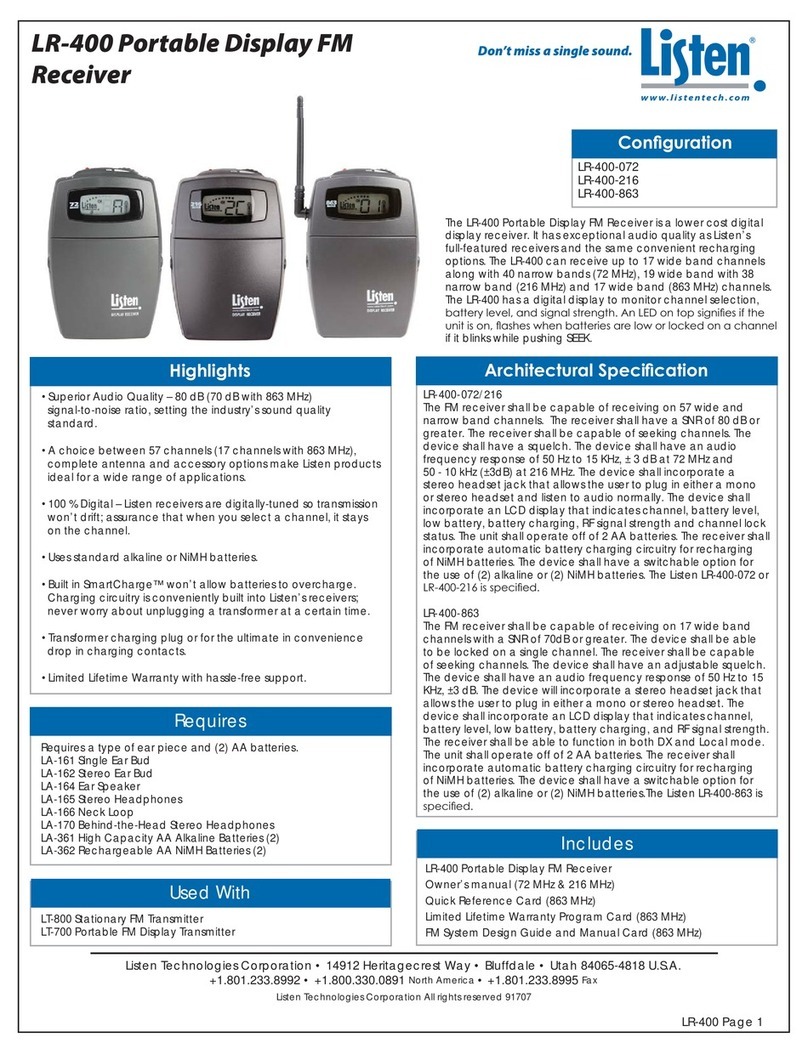
Listen Technologies
Listen Technologies LR-400 User manual
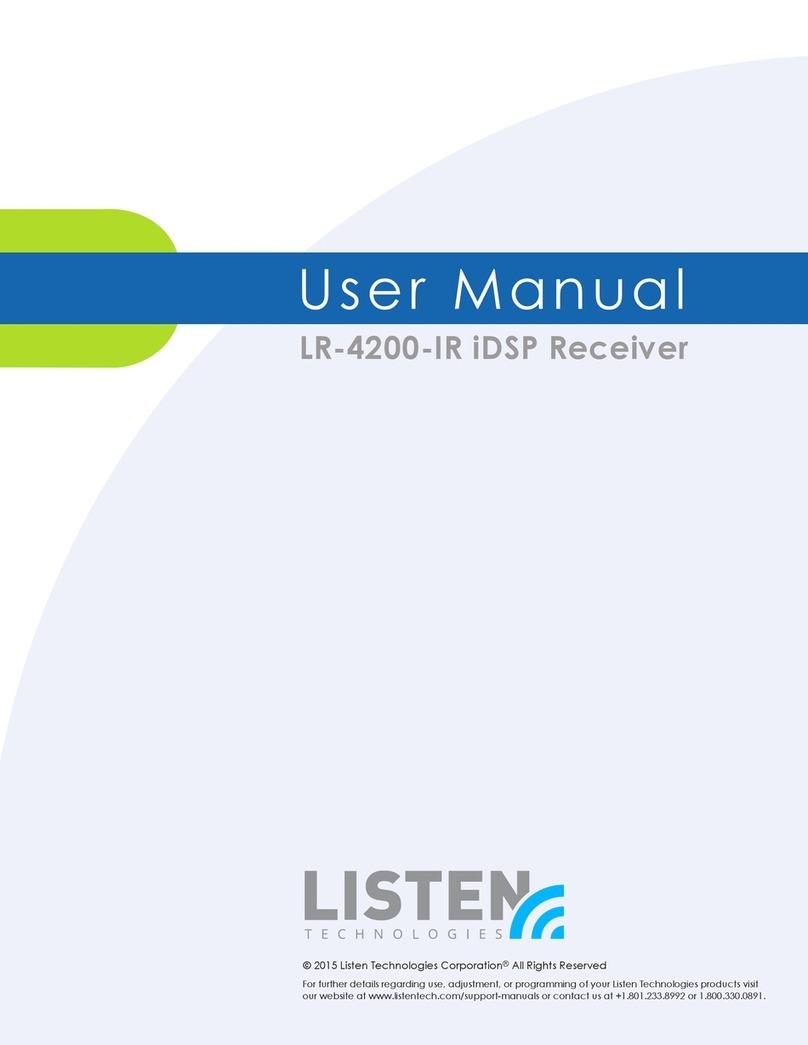
Listen Technologies
Listen Technologies LR-4200-IR User manual

